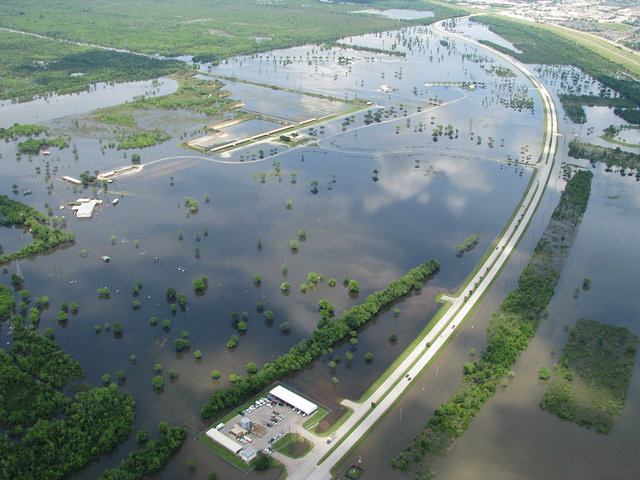More than half a million Texans could see their flood insurance wash away unless Congress acts to reform and renew the federal program for doling out funds.
The National Flood Insurance Program, which administers flood insurance to over five million policyholders in 22,000 communities across the country, has rung up $23 billion in debt and is struggling to keep up with new claims.
 |
| Flooding in Houston, Texas in 2015 |
In the wake of record rainfall last year in the Lone Star State — resulting in more than $3 billion in flood damage — accessing flood insurance relief has served as a life raft. With the NFIP up for renewal by Congress next year, it presents an opportunity now to reform the program before giving it a green light in order to make it work for policyholders and taxpayers alike.
Many in the nation’s capital are taking the federal flood insurance reform seriously, including State Rep. Jeb Hensarling (R-Dallas) who is making this issue a priority. He’s joined U.S. Rep. Roger Williams (R-Austin) and a bipartisan group of 19 other lawmakers in pushing for passage of the Flood Insurance Market Parity Act, which encourages the development of a private flood insurance market while giving states the right to regulate private flood insurers. As chairman of the Financial Services Committee, Hensarling is well-positioned to move this and other reforms forward.
Fostering a more robust marketplace for private insurers will provide consumers with more options for purchasing flood insurance while driving down price. By easing regulations that discouraged marketplace competition, several states – including Florida and West Virginia – are already seeing more private insurers enter the flood insurance market. This change is resulting in more competition, lower rates and better coverage.
In addition to bringing in more private insurers to the flood insurance market, Congress should make other reforms that will help cement the NFIP’s long-term success.
One of these changes is ensuring that the most accurate risk assessment tools, as well as modern technology, are being used to update flood maps. In turn, property owners won’t have the burden of determining risk. This will enable the NFIP and private insurers to offer rates that accurately reflect the risk that a property faces.
It’s also important to ensure the program focuses on incentivizing storm mitigation efforts. For example, the NFIP should provide financial assistance to lower-income policyholders for more effective preparation prior to future storms.
Moreover, strengthening infrastructure and updating building codes can go a long way towards ensuring that communities are better prepared for the next major storm. Taking proactive measures will save lives and prevent damage down the road.
The fact is that all 50 states have experienced floods in the past five years, and frequent storms are a new reality that our nation must adapt to.
Texans have been hit hard by flooding — from Hurricane Ike to Hurricane Sandy to the recent winter storms – and unfortunately storms will continue to touchdown and cause flooding. But Congress is running out of time to tackle reforms before the program is up for renewal. And, unless Congress acts soon, relief for Texans suffering from flood damage might dry up.
Ellis is vice president of Taxpayers for Common Sense and a member of the SmarterSafer coalition. For more information, visit smartersafer.org.














Get Social